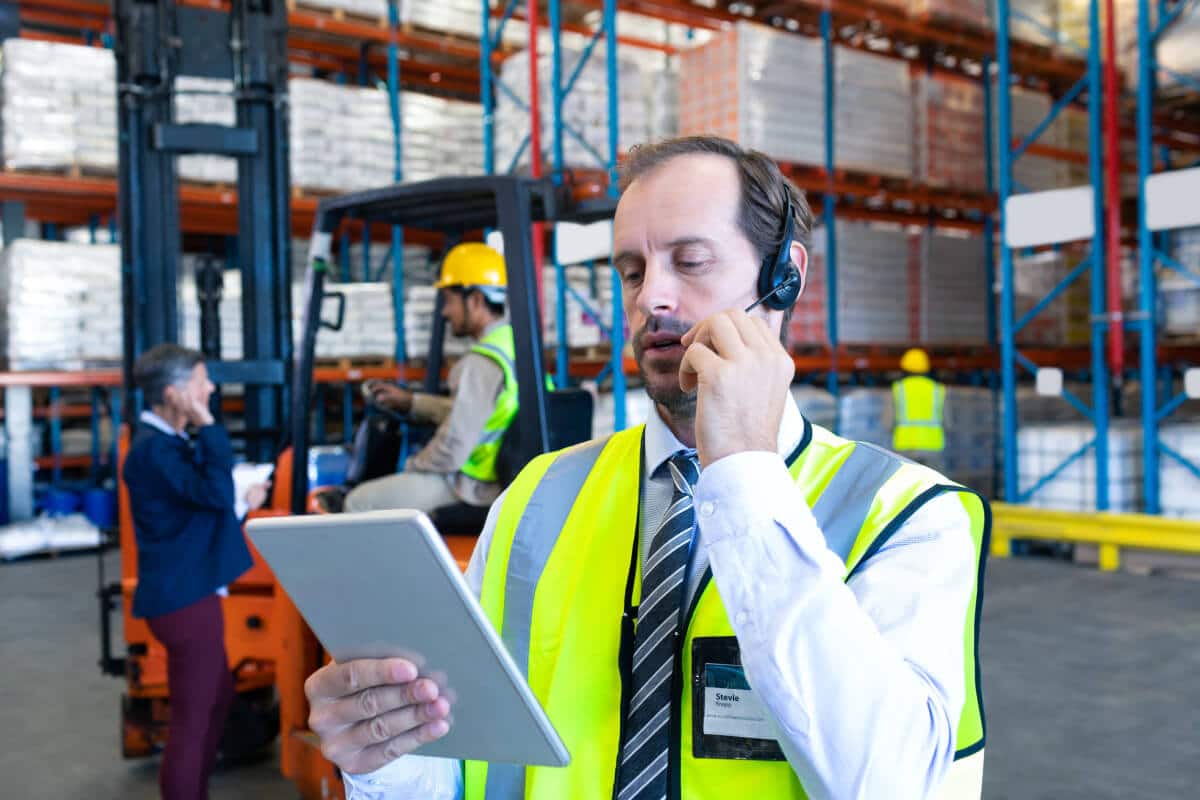Divisions
Not Finding What You're Looking For?
Head over to our contact page and tell us what you’re looking for and we’ll handle the rest!
Head over to our contact page and tell us what you’re looking for and we’ll handle the rest!

Warehouse managers are laser-focused on preserving and protecting their inventory. Keeping mass quantities of valuable products safe, free from deterioration, and readily available for picking and shipping are the primary purposes of a warehouse. But keeping products protected isn’t the only safety issue at warehouses. As it turns out, warehouses are also hazardous for workers.
Warehouse workers face hazards throughout their shifts. Examples include:
Accidents are common in warehouses. Wise warehouse managers are unrelenting in eliminating hazards and maintaining a safe environment for the products and the workers under their care. Let’s take a closer look at examples of strategies and warehouse safety solutions that effectively keep employees out of danger.
Clear, visible signs and labels communicate critical safety information to your crew. They help your employees know how to keep themselves safe while performing their duties. For example, you can use signs and labels to communicate the following:
Everyone in your warehouse will be safer with the help of effective signage.
Your employees need to be protected from head to toe. The requisite safety equipment will vary depending on your specific circumstances but may include items such as helmets, eye protection, respiratory protection, ear protection, gloves, kneepads, and reinforced shoes. You need to provide the equipment, keep it in tip-top condition, and be strict about requiring it when working.
Ergonomics are also essential for worker safety. Anything you can do to reduce strain and improve comfort will help reduce work-related injuries. Your efforts may include anything from installing impact-absorbing floor mats to changing the layout of a certain area to eliminate repetitive twisting and reaching. When it comes to making work more comfortable, listen to your employees and give them the freedom to ask for help when needed.
Take the time to fully understand the risks associated with your warehouse and define your PPE requirements so that everyone stays safe, healthy, and on the job.
You also need to equip your warehouse with safety gear such as the following:
Make sure you have the safety equipment your warehouse needs to stay compliant, safe, and productive.
Training your team and then retraining them, again and again, is critical to creating and maintaining a safe workplace for everyone. Insufficient safety training is likely the most significant hazard your team members face. If your employees don’t know how to read the signs you’ve posted, work safely, or use the safety gear they’ve been given, all the steps you’ve taken to provide a safer environment will be for naught.
Here are a few examples of what your training efforts might include:
Heavy equipment operators need to be trained specifically on their machines and hold active licenses or certifications if necessary.
Train your team on the proper methods for lifting and moving loads. Provide regular instruction on safe, ergonomic movements and postures and how to recognize personal limitations before an injury occurs. Emphasize the importance of warming up before work and taking time to recover after work to combat fatigue.
Train your team on identifying chemical hazards and techniques for their proper handling, storage, and disposal. Training also needs to include the use of appropriate PPE and how to respond in case of an emergency.
Suppose you have all the necessary alarms, extinguishers, and sprinklers in place, but your people don’t know how to use them or respond appropriately in the event of an emergency. In that case, no amount of equipment will be sufficient. Regular training ensures that employees have reliable, practical information about fire safety that can keep them safe if the unthinkable happens.
Improving warehouse safety is all about consistent actions across the entire warehouse operation. Safety doesn’t stop at your safety committee; everyone in the warehouse needs to be actively engaged in safety efforts, including heeding safety signs, wearing PPE, working ergonomically, and participating in regular safety training exercises.
If you’re ready to take warehouse safety to the next level, Indoff is here to help. Contact a local representative today to discuss a safety “toolbox” that will help you build a safety culture from the ground up. Our team can help with it all, including:
If you’ve got questions about how implementing safety measures will boost your productivity and bottom line, talk to a warehouse safety specialist at Indoff. Find the workplace safety strategies and solutions you need with the help of Indoff. We’re ready to learn about your operation and business goals and get you on track to a healthier, safer workplace.
Courtney joined Indoff in 2010. She brings years of experience in project management and tech solutions and is responsible for supporting our Partners’ sales efforts.
Phone: (314) 997-1122 ext. 1291
courtney.brazell@indoff.com
Josh joined Indoff in 2013 as part of the acquisition of Allied Appliance and was paramount to Indoff’s acquisition of Absocold, a manufacturer of refrigerators and microwaves, in 2017. In 2025, Josh was promoted to President of Indoff, where he collaborates closely with Indoff’s Partners and Marketing department to develop and implement strategies that enhance the Indoff brand. Josh’s leadership and industry knowledge are instrumental in ensuring Indoff remains a leading provider of business solutions nationwide.
Phone: (314) 997-1122 ext. 1107
josh.long@indoff.com
Jim joined Indoff in 1988 after spending 5 years at Ernst & Young, where he specialized in audit and accounting for privately-held businesses. Jim is responsible for the day-to-day management of Indoff.
Phone: (314) 997-1122 ext. 1203
jim.malkus@indoff.com
John’s background includes the start up and acquisition of several successful business ventures, and he provides strategic planning and overall corporate governance.
Phone: (314) 997-1122 ext. 1201
john.ross@indoff.com